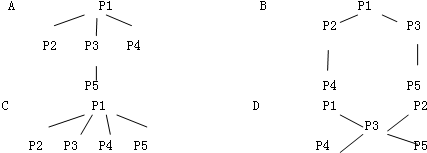题目内容
11.It's long been known that dogs and cats,with their well developed sense of smell,can be trained to identify the chemicals released by human illnesses.In some cases,researchers have even trained household pets to detect or predict epilepsy(癫痫病).But what if we could fine set that sense and put it into a microchip,allowing us to create a breathalyzer for diseases?For Dr.Andrew Koehl,the inventor of the microchip technology at the heart of this digital nose,the technology that will allow us to do just that is already here."We can detect down to parts per billion levels,"Koehl says."To give you a similarity that's equal to one drop in an Olympic size swimming pool."The sensor identifies each chemical's make-up in the air.If the sensor is set to a certain level,it will set off an alarm.
Work continues to make it smaller and makes it able to enter the healthcare market.Within several years,the company hopes to develop it as a diagnostic(诊断) tool."What's amazing is that there really are chemicals on your breath that indicate illness,that's been shown through a number of studies and we can detect those,"he said."There have already been a number of research papers published suggesting we can detect many disease."
At the beginning,the technology had been developed for defense purposes.He said the terror caused by the events of September 11had got him thinking about the application of this type of sensor in safety check."Originally it was aimed at detecting things like explosives,poisonous chemicals and other terrors that might occur,"said Dr Koehl.
Eventually the sensor could become a part of many everyday instruments,warning users of which foods are going bad in the fridge or even the best moment to take the roast out of the microwave oven.
You could even,one day,have a digital nose that you could carry in your pocket."More recently we've been looking at user spaces so we're talking to a number of producers of mobile phones and mobile phone parts,"he said."We want to develop a module small enough to put into mobile devices like phones."
59.It can be inferred from the passage thatC.
A.This type of sensor was designed to prevent disease at first
B.The digital nose can be put into mobile phones at present
C.Users might take the mobile devices with them in near future
D.The new invention has already entered the healthcare market
60.The underlined word"detect"(Paragraph1)is closest in meaning toB.
A.protectB.discoverC.settleD.remove
61.What's the passage mainly about?D
A.Dogs and cats have a strong sense of smell.
B.A new sensor is used to identify chemicals.
C.Modern technology is developing very fast.
D.Digital nose on a microchip can smell diseases.
分析 本文属于说明文阅读,作者通过这篇文章主要向我们描述了数码鼻在微芯片上能闻到疾病,在不久的将来用户可能会采取移动设备.
解答 59.C.推理判断题.根据最后一段:You could even,one day,have a digital nose that you could carry in your pocket可知用户可能会采取移动设备与他们在不久的将来;故选C.
60.B.词义猜测题.根据第一段:In some cases,researchers have even trained household pets to detect or predict epilepsy在某些情况下,研究人员甚至训练宠物检测或预测癫痫,可知意为检测;故选B.
61.D.主旨大意题.通读全文,可知文章主要讲数码鼻在微芯片上能闻到疾病,在不久的将来用户可能会采取移动设备;故选D.
点评 考察学生的细节理解和推理判断能力,做细节理解题时一定要找到文章中的原句,和题干进行比较,再做出正确的选择.在做推理判断题不要以个人的主观想象代替文章的事实,要根据文章事实进行合乎逻辑的推理判断.

练习册系列答案
相关题目
